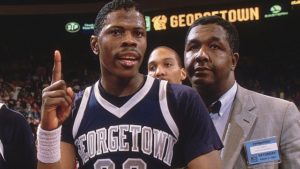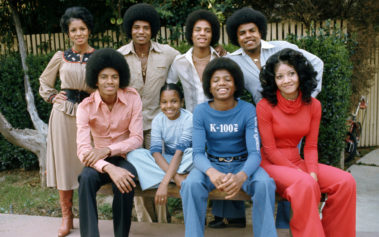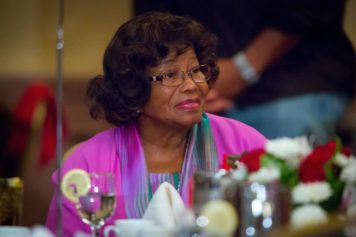
It was during one of the maddest Marches on record when the Hoyas, led by coach John Thompson, played with a gusto not seen for some time in a conference, the Big East, that was equally fiery and skilled. From all points across the country, kids in urban areas in the 1980s rooted for Georgetown not because they were an all-Black team with a Black coach, but because they were a dignified all-Black team that did not take any mess.
African-American adults pulled for the Hoyas because Thompson played out the Black-Man-of-Power role the way many of them wished they had the authority and courage to do in the workplace. Thompson orchestrated and executed things his way, without the consideration—and often to the intentional ire—of white people. But always with sound reasoning.
Above all, he understood the magnitude of his role as a Black man from Washington, D.C., protecting the interests of Black young men under his charge. He was primarily intent on building strong young men, not just dynamic athletes.
Georgetown players wore suits to games, were respectful during interviews and always held their heads high, proudly. That positive image clashed with an on-court ferocity, anchored by all-time great Patrick Ewing, that overwhelmed most teams.
The Hoyas beat foes and beat them up, too, when necessary. With the 6-foot-10 Thompson on the sideline, white towel draped on his shoulder, and his team flying around the court in dusty gray uniforms, Georgetown symbolized something new and liberating in college basketball for Black people: A team led by a Black coach that played with a street ball mentality.
Not the street ball of incessant, fancy dribbling and acrobatic shots. Rather, street ball in the sense of no layups allowed. Give up nothing. Play as if it’s the playground where, if you lose, you get off the court and have to wait 45 minutes to play another game. That mentality will make a player play.
Thompson’s Hoyas did it better than most. All these years later, no one has been able to replicate the Georgetown press, the inside dominance of Ewing and a wave of players who all contributed with an unyielding passion and drive that actually scared teams. No team injected pride in Black America like Georgetown. Not UNLV with Larry Johnson, Stacey Augmon, Greg Anthony, et al. And not Michigan with the Fab Five, either.
Georgetown was pop culture. UNLV and Michigan were, too, but they did not have a coach like Thompson, whose practices induced the brand, “Hoya Paranoia,” an expression that accurately depicted the times. Thompson was paranoid about control of his team and not allowing it to drift into a place that would compromise what he believed was the best way to raise his “kids.” He fiercely protected them, as a committed father would.
Thompson created a culture of “us against the world,” one that paralleled the world Black men lived in then. . . and now, actually.
None of it would have worked if Ewing were not the ideal teammate. Born in Jamaica and raised in Boston, the All-American center was all about winning and winning as a team. His teammates loved him for never “big-timing” them and always functioning as just one of the guys.
That attitude brought out the best of the players during Ewing’s era: David Wingate, Reggie Williams, Gene Smith, Freddy Brown, Horace Broadnax, Michael Graham, Bill Martin, Ralph Dalton, Michael Jackson and Perry McDonald, among others.
The Big East emerged as college basketball’s finest and toughest conference, with six teams making the Final Four in the ‘80s: Georgetown (three times), St. John’s, Syracuse, Providence, Seton Hall and Villanova. Pretty remarkable.
Those days are long gone, like the Big East. Back then, you knew all the players. Ewing stayed four years at Georgetown when he could have been the No. 1 pick in the NBA Draft after his freshman year. No star player does that today. Players with potential leave college early, for the money, making it difficult to create a connection with teams like in the golden ‘80s.
Not everyone was happy that Thompson and his all-Black Hoyas were the leaders of this grand time. The word “thugs” often was tossed around in reference to the Hoyas. Ewing routinely was ridiculed with racist chants or gestures, even in his hometown of Boston. Their hate only fueled Ewing’s and Georgetown’s combative, “it’s just us” posture.
Those days were the best, a unique time in college basketball that reinvigorated the sport the way Magic and Bird did the NBA just a few years earlier.
March Madness 30 years ago ended on April Fool’s Day, with Georgetown losing to Villanova in perhaps the greatest upset in NCAA Tournament history. Black people around the country were devastated. They expected a second straight national championship for the Hoyas. But it says a lot that they created a benchmark likely to never be seen again.



